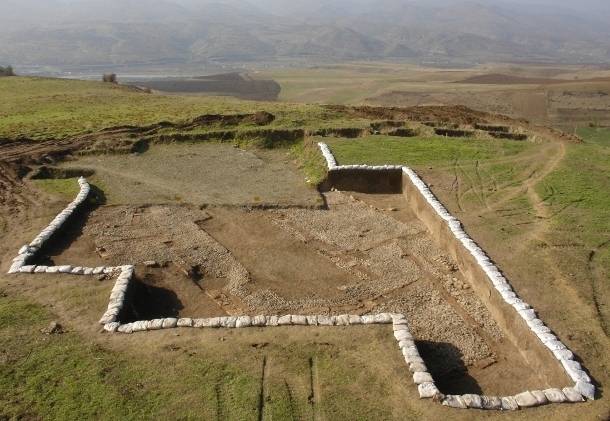Here is IFP’s translation of a report by the Public Relations Department of the Research Institute of Iran’s Cultural Heritage, Handcrafts and Tourism Organization (ICHTO):
Reza Heidari, the head of the fifth season of archeological excavations in Rabat hill, said that his team has unearthed ancient pottery, architectural remnants and glazed bricks in the site.
Heidari added that the bricks are embellished with geometric, mythological and human motifs that represent a relationship between neo-Assyrian Empire and art and religion.
“Among the ancient objects found in the site are the glazed bricks. On these bricks, the names of the pagan Gods of Bel and Nebo and Mannaean kings are inscribed in Assyrian cuneiform,” Heidari said, noting that excavations in Sardasht’s Rabat hill started in 2005.
The Mannaeans were ancient people who lived in the present-day north-western Iran, south of Lake Urmia, around the 10th to 7th centuries BCE. At that time, they were neighbours of the empires of Assyria and Urartu, as well as other small buffer states between the two, such as Musasir and Zikirti.
In the Bible (Jeremiah 51:27), the Mannaeans are called Minni. In the Jewish Encyclopaedia (1906), Minni is identified with Armenia.
